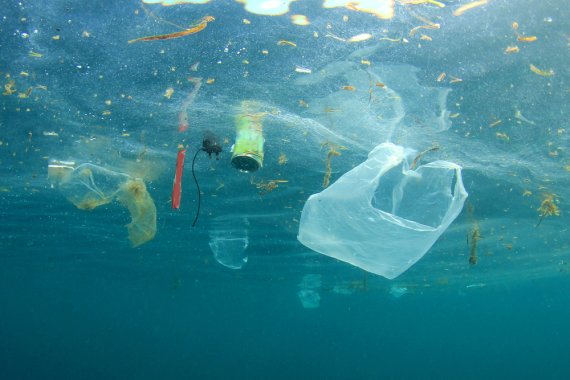© Shutterstock
This is revealed by Ellen Besseling’s PhD thesis, which she defended today. Besseling studied the effects of microplastic and nanoplastic particles in aquatic life. Microplastics are particles smaller than 5 mm, whereas nanoplastics are smaller than 100 nm. She developed a first cautious risk assessment of the current exposure of the environment to microplastics.
Worries
Today, plastic is found everywhere in nature. The plastic soup in the oceans is a frightening image that accompanies this phenomenon. But the opinions on how harmful that plastic differ greatly. Besseling herself was ‘reserved regarding the effects’ when she started her studies. But that reservation has been replaced by worries. ‘The risks will truly become significant if the concentrations of plastic will keep increasing, especially in the coastal areas.’
Besseling performed various studies into the direct effects of the plastic and the role it plays as a carrier of polluting chemicals. The latter effect in particular, the bioaccumulation of hydrophobic substances by plastic, is not as bad as was feared. Besseling: ‘Both my model study and the experiments have shown that the transport of pollutants by microplastics has a negligible contribution to the total risk due to exposure to plastic.’
It obviously triggers the curiosity to find out what causes these effects.
Ellen Besseling
However, the reason for this conclusion is not pretty. The concentrations of pollution in the water are already so high that transport by plastics does not contribute any significant risks anymore. However, the plastic particles themselves are not risk-free, as was shown by experiments with nanoplastics on algae and water fleas. In the presence of nanoplastics, the growth of algae is slowed and water fleas are less numerous, smaller and exhibit deformities.
Pink
But to achieve these effects, high concentrations of nanoplastics are required, Besseling adds reassuringly. ‘The water sometimes had a pinkish colouration due to the amount of plastic particles. Those are not concentrations encountered in the environment. These high concentrations were used to prove that there are effects and consequences. And it obviously triggers the curiosity to find out what causes these effects.’
For her final risk assessment of microplastics and nanoplastics, Besseling compared the measured concentrations of microplastics in seawater with the concentrations for which it is now known that they will cause negative effects for a number of organisms. In the pollution hotspots, 10 to 20 percent of the organisms turns out to be in the danger zone. Those hotspots are mainly in the coastal areas.


